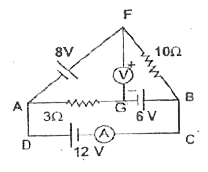In figure , assuming the diodes to be ideal ,
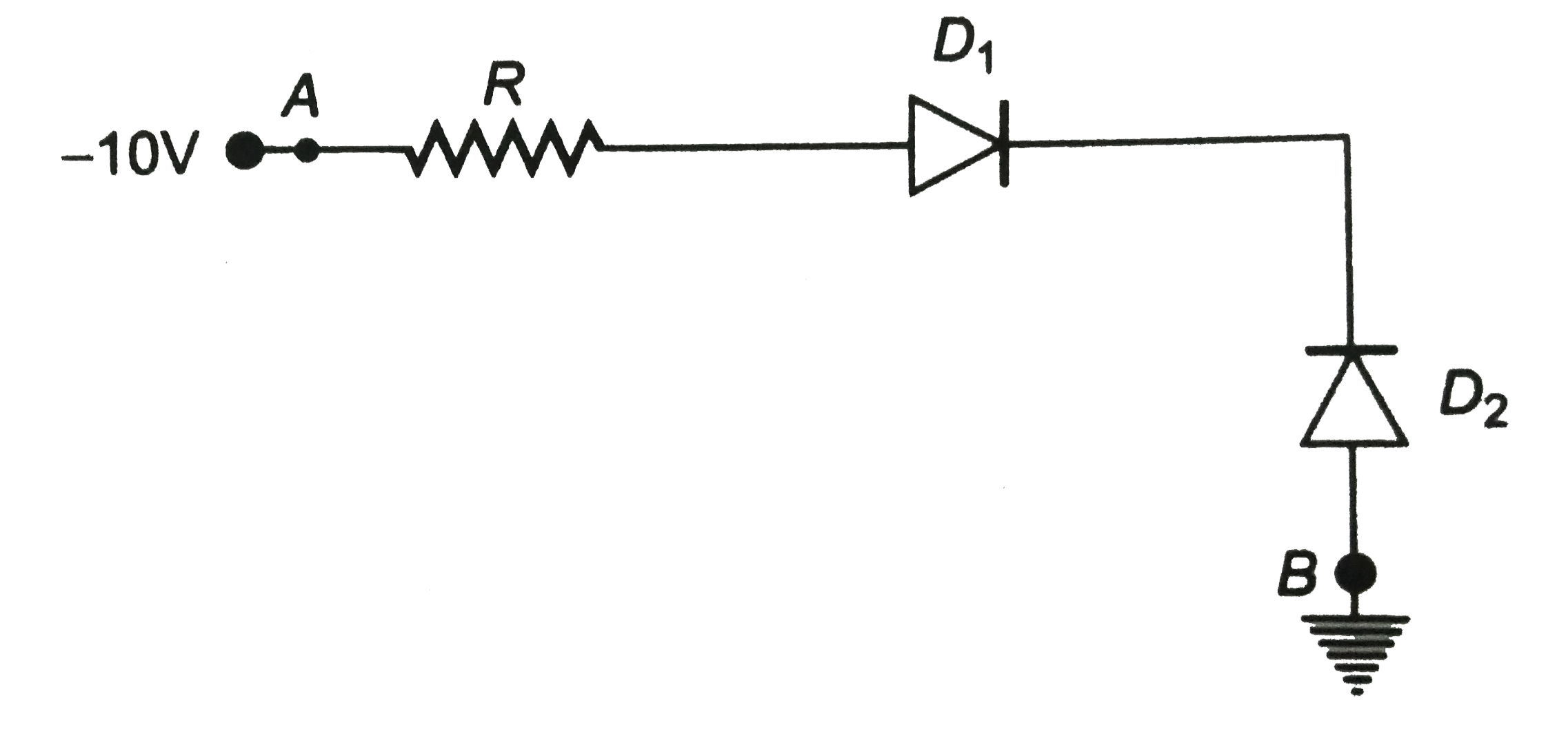
D1 is forward biased and D2 is reverse biased and hence current flows from A to B
D2 is forward biased and D1 is reverse biased and hence no current flows from B to A and vice-versa.
D1 and D2 are both forward biased and hence current flows from A to B
D1 and D2 are both reverse biased and hence no current flows from A to B and vice-verse.
The correct Answer is:B
In the given circuit p−side of p−n function D1 is connected to lower voltage and n−side of D1 to higher voltage. Thus D is reverse blased.
The p−side of p−n junction D2 is at higher potential and n−side of D2 is at lower potential.
Therefore D2 is forward blassed
Hence, current flows through the junction B to A
Topper's Solved these Questions
- NUCLEIBOOK - NCERT EXEMPLAR ENGLISHCHAPTER - NUCLEIEXERCISE - Very short Anwer type question
14 Videos
- NUCLEIBOOK - NCERT EXEMPLAR ENGLISHCHAPTER - NUCLEIEXERCISE - Long answer type question
10 Videos
- MOVING CHARNGES AND MAGNETISMBOOK - NCERT EXEMPLAR ENGLISHCHAPTER - MOVING CHARNGES AND MAGNETISMEXERCISE - Long Answer Type Questions
7 Videos
- RAY OPTICS AND OPTICAL INSTRUMENTS BOOK - NCERT EXEMPLAR ENGLISHCHAPTER - RAY OPTICS AND OPTICAL INSTRUMENTS EXERCISE - VERY SHORT ANSWER TYPE QUESTIONS
16 Videos
Similar Questions
Knowledge Check
Two moles of Helium gas undergo a reversible cyclic process as shown in figure. Assuming gas to be ideal, what is the net work involved in the cyclic process ?
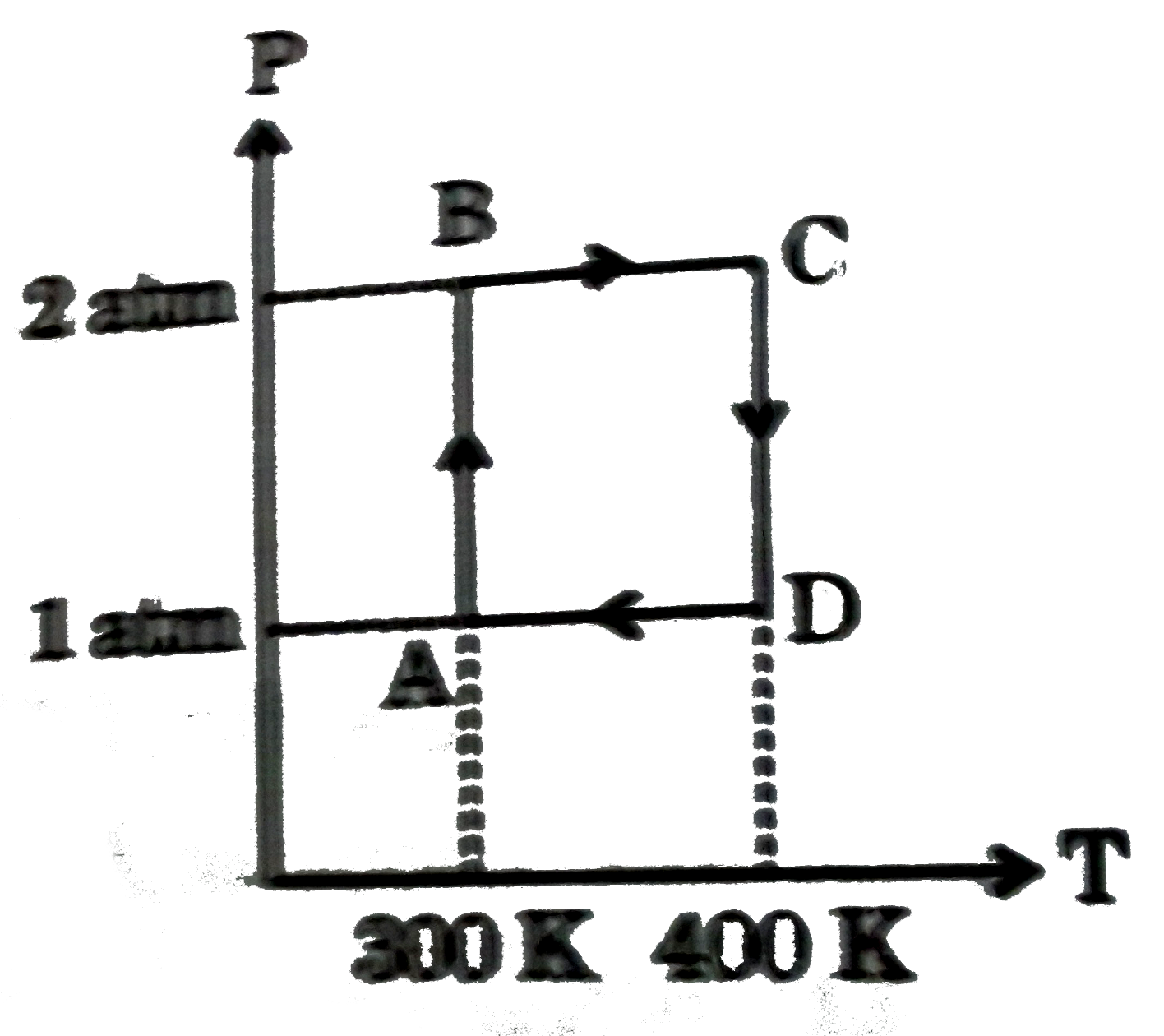 A200R ln2B100R ln2C300R ln2D400R ln2
A200R ln2B100R ln2C300R ln2D400R ln2Two moles of Helium gas undergo a reversible cyclic process as shown in figure. Assuming gas to be ideal, what is the net work involved in the cyclic process ?
 A200 Rln2B100 Rln2C300 Rln2D400 Rln2
A200 Rln2B100 Rln2C300 Rln2D400 Rln2
A diode is a device that allows current to be carried in only one direction (the direction indicated by the arrowhead in its circuit symbol). Find (approximately) in terms of ΔV and R the average power delivered to the diode circuit of the figure. Assume that the diodes are ideal and ΔV is the rms voltage applied to the circuit.
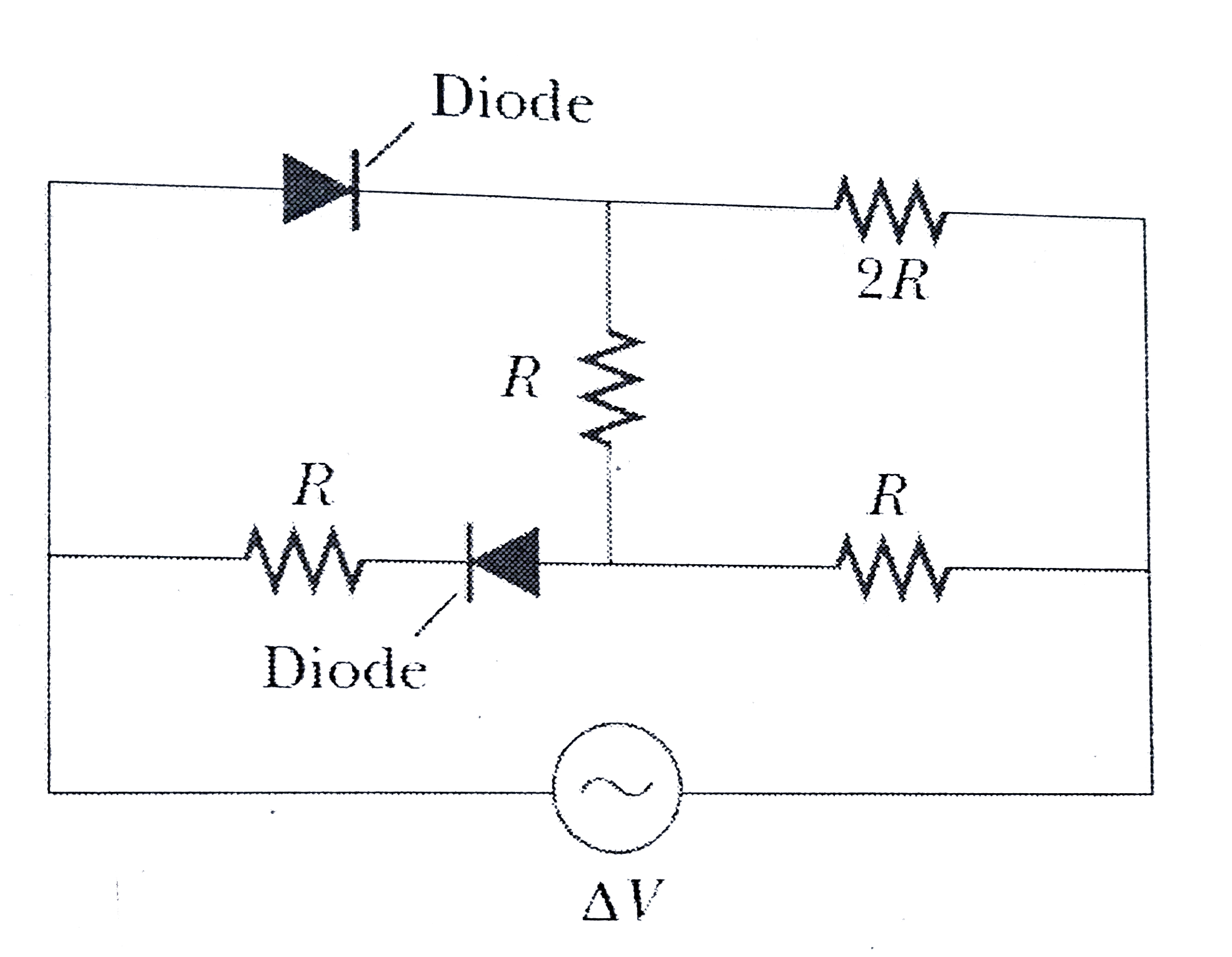
View SolutionIn the circuit shown, the average power dissipated in the resistor is (assume diode to be ideal)
View Solution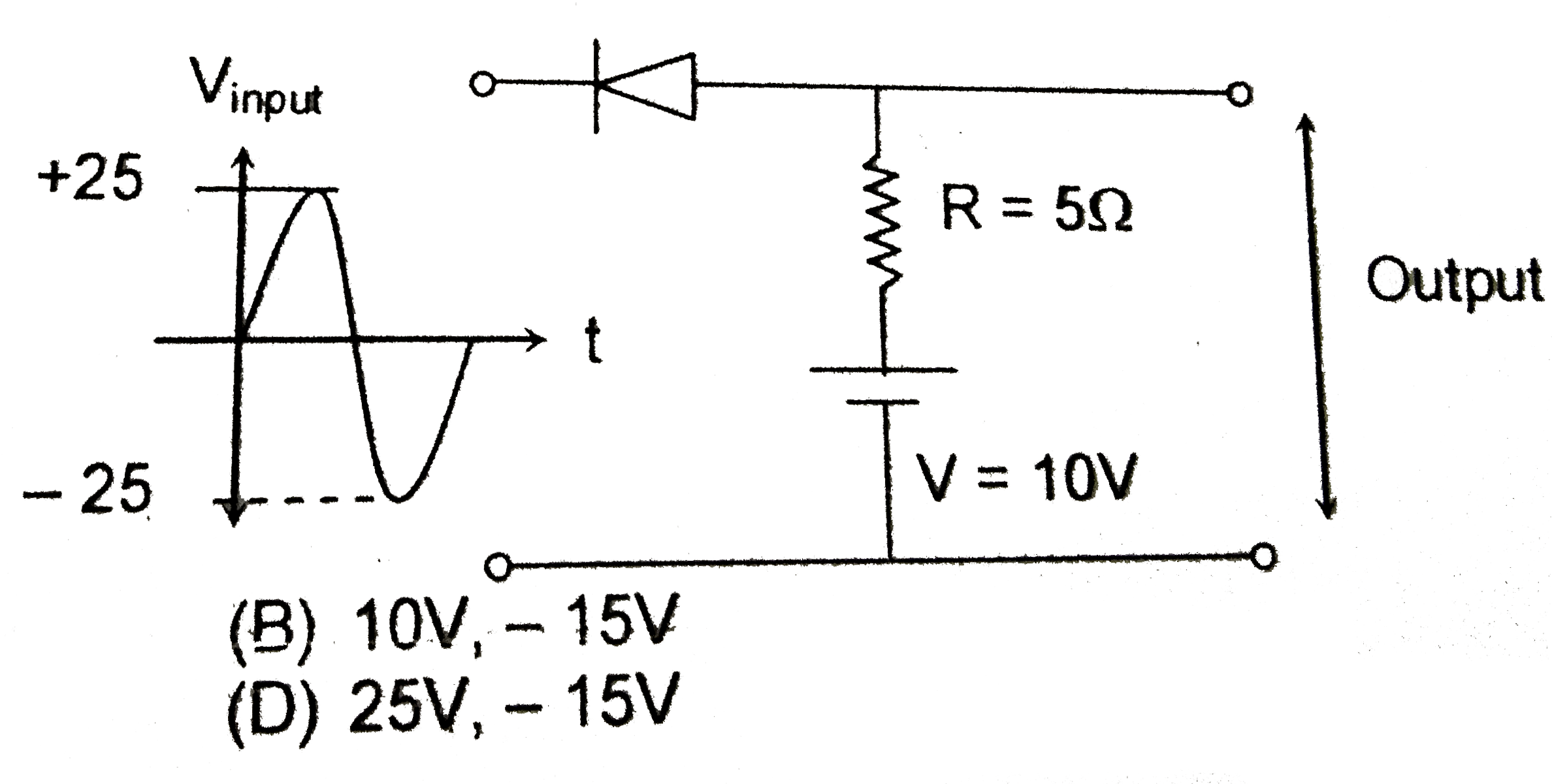
An ideal diode is connected in a circuit with resistance R=5Ω and V=10 volt as shown in figure maximum and minimum value of output voltage. When no load applied is (assume diode to be ideal)
View SolutionIn the following figure all surfaces are assumed to be frictionless and pulley us assumed to be ideal. The block 'A' is projected towards the pulley 'P' with an intial velocity u0 then select correct option :
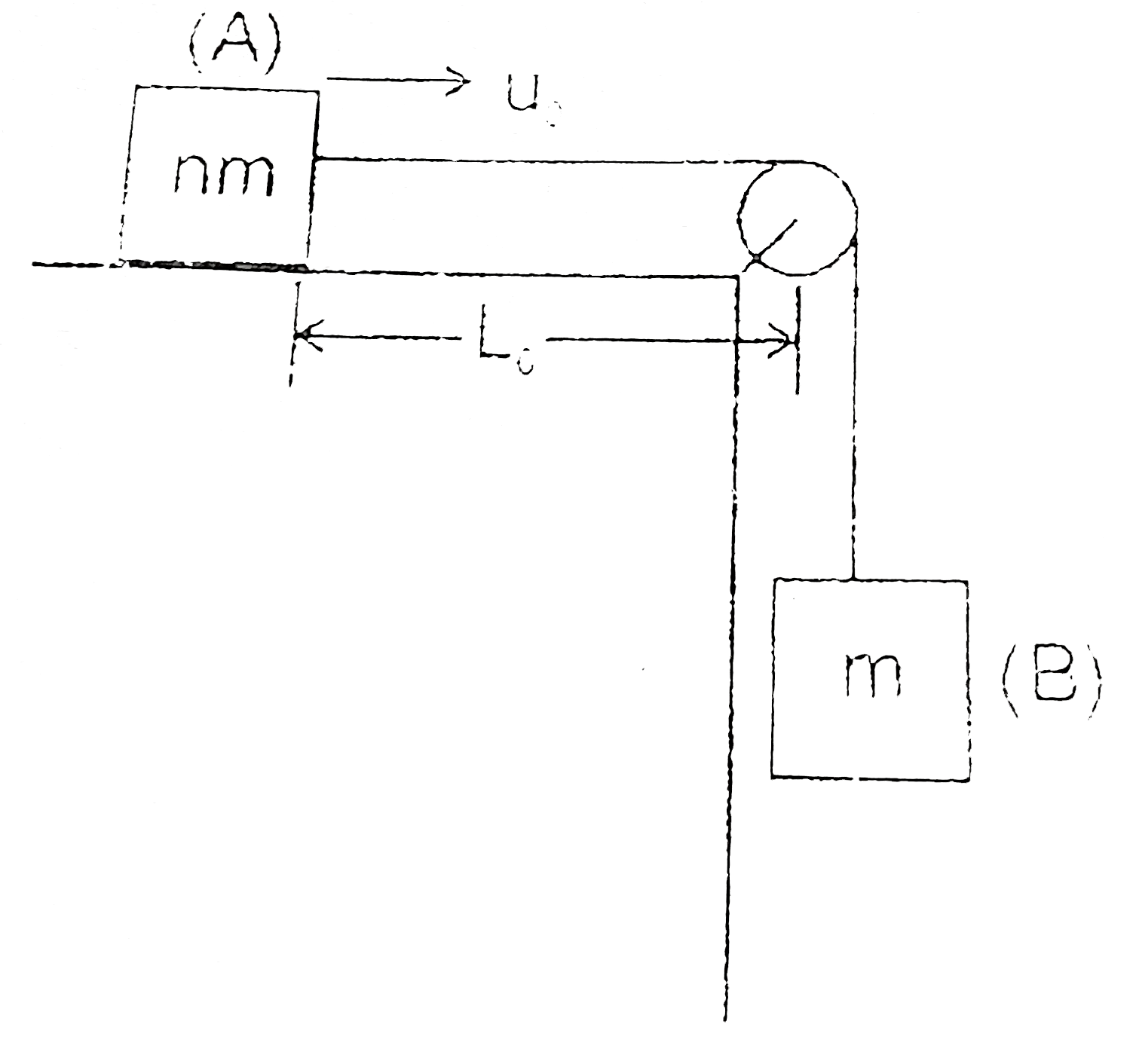
View SolutionA fullwave P.N diode rectifier used load resistor of 1500Ω. No filter is used. Assume each diode to have idealized characteristic with Rf=10Ω and Rr=ac. Since wave voltage applied to each diode has amplitude of 30 volts and frequency 50 Hz. Calculate.
(i) Peak, d.c rms load current
(ii) d.c power output
(iii) A.C power input
(iv) Rectifier efficiency.
View SolutionIn the circuit shown in figure, if the diode forward voltage drop is 0.3 V, then the voltage difference between A to B is,

View Solution

